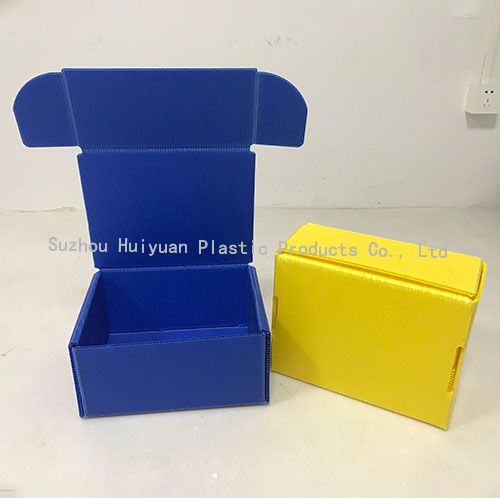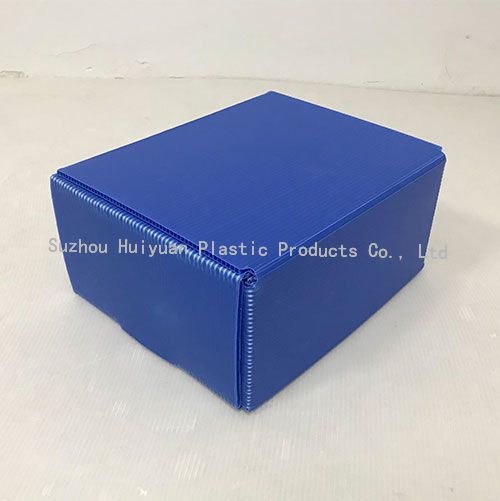©Copyright 2019 Suzhou Huiyuan Plastic Products Co., Ltd All rights reserved. Terms and Conditions Designed by iwonder.cnSite Map
In modern logistics and manufacturing industries, packaging is more than just a protective layer—it’s a crucial part of product integrity, cost efficiency, and sustainability. Among the wide range of packaging materials available today, the corflute box has become a preferred choice for heavy-duty packaging. Known for its excellent strength-to-weight ratio, water resistance, and reusability, corflute storage boxes offer a reliable solution for industries that require robust yet lightweight packaging materials.
This article will explore what a corflute box is, its key advantages, applications in heavy packaging, and how it compares to other materials like cardboard and wooden crates.

A corflute box is made from corrugated polypropylene sheet, also known as PP corrugated plastic. The term “corflute” is commonly used in Australia, New Zealand, and the UK to describe this double-walled plastic sheet that consists of two flat layers connected by a fluted middle layer.
This structure provides impressive rigidity and durability while keeping the box lightweight. It is often used for transporting heavy or sensitive items that require both strength and moisture resistance.
Corflute boxes are specifically engineered to perform in demanding industrial and commercial settings. Below are the main characteristics that make them stand out:
Despite their lightweight design, corflute boxes are highly impact-resistant. The fluted polypropylene core distributes pressure evenly, preventing crushing or deformation. This makes them suitable for heavy products such as automotive components, metal parts, or machinery accessories.
Unlike cardboard packaging, corflute is completely waterproof. It resists moisture, oils, and many types of chemicals, ensuring the packaged goods remain dry and uncontaminated even in humid or industrial environments.
Corflute boxes can be reused many times, offering a sustainable and cost-effective alternative to disposable cardboard boxes. Their durability significantly reduces packaging waste.
Even though these boxes can handle heavy loads, they remain remarkably light. This reduces transportation costs and improves worker efficiency during handling and stacking.
Manufacturers can easily customize corflute storage boxes to meet specific packaging requirements. They can be made in various sizes, colors, and designs, with options for partitions, inserts, and printing (such as company logos or handling instructions).
A corflute box offers a high strength-to-weight ratio, allowing it to safely carry heavy items without adding significant weight to the total shipment. This advantage is particularly beneficial for export packaging, where freight weight directly affects cost.
While the initial cost of corflute boxes may be higher than cardboard, they are reusable many times. Over repeated cycles, the total cost per use becomes far lower than single-use packaging options.
Polypropylene surfaces are easy to clean and sanitize, making corflute packaging ideal for industries that require hygiene—such as pharmaceuticals, electronics, and food processing.
For outdoor storage or long-distance shipping, corflute storage boxes withstand exposure to sunlight, rain, and dust without losing their structural integrity. This feature makes them suitable for heavy packaging in outdoor or semi-open environments.
Corflute boxes are 100% recyclable. Once they reach the end of their lifecycle, the material can be reprocessed into new plastic products, minimizing environmental impact.

Because of their versatility and durability, corflute boxes are used across many industries. Here are some of the most common applications for heavy packaging:
For transporting metal parts, bumpers, or accessories, the corflute box provides the necessary strength and resistance to oil or grease contamination.
Electronics often require static-free and moisture-proof packaging. Corflute boxes with ESD (electrostatic discharge) treatment are ideal for circuit boards and delicate components.
Corflute storage boxes are widely used for fruit and vegetable packaging due to their waterproof and reusable nature. They can withstand washing and are safe for direct food contact.
Heavy nuts, bolts, machinery parts, and tools can be securely packed in custom-sized corflute boxes with dividers or foam inserts to prevent movement during transport.
In cleanroom environments, hygiene is essential. Corflute packaging ensures no contamination, and its non-porous surface can be easily disinfected.
Corflute packaging can be customized into many forms depending on the use case. Common types include:
Rectangular boxes with flaps or lids, ideal for general packaging and logistics.
Designed for sorting and separating small parts within a single box—commonly used in assembly plants or warehouses.
Foldable structures for saving space when not in use, especially for returnable packaging systems.
Reinforced versions for maximum strength and stacking ability, used for bulk or export packaging.
Used for brand promotion or organized warehouse storage, these can feature company names, color codes, or safety symbols.
| Feature | Corflute Box | Cardboard Box | Wooden Crate |
|---|---|---|---|
| Weight | Very light | Light | Heavy |
| Durability | Excellent | Moderate | High |
| Water Resistance | 100% waterproof | Not waterproof | Partial |
| Reusability | Many times | Single-use | Reusable |
| Cost per Use | Low (after reuse) | Low (initially) | High |
| Customization | High flexibility | Moderate | Low |
| Recyclability | Fully recyclable | Recyclable | Reusable wood |
From this comparison, it’s clear that corflute boxes offer the perfect balance between strength, reusability, and environmental responsibility. They are lighter than wood, more durable than cardboard, and more cost-efficient in repeated-use scenarios.
Determine Load Requirements: Always match the box thickness (e.g., 3mm, 5mm, or 8mm corflute sheet) to the product’s weight and shipping conditions.
Add Dividers or Inserts: Prevent movement and collision inside the box.
Consider ESD or UV Resistance: For sensitive or outdoor storage applications.
Choose Foldable Designs: For returnable or warehouse storage systems to save space.
Opt for Printing: Add labels or barcodes for easy identification and branding.
The corflute box for heavy packaging represents the next generation of industrial packaging—strong, lightweight, reusable, and sustainable. Whether for automotive, electronics, or food applications, these boxes provide long-term reliability and efficiency. Compared to traditional materials, corflute offers unmatched performance in moisture resistance, reusability, and overall cost-effectiveness.
If your business requires packaging that can handle heavy loads, resist environmental challenges, and support sustainability goals, corflute storage boxes are a smart investment for modern supply chains.
By continuing to use the site you agree to our privacy policy Terms and Conditions.